Into the Woods has been a point of concern to everyone who knows the show since the Disney and Rob Marshall set out to make it happen as a film. Why? Let’s just say there are many aspects to the tale that are not exactly Disney-friendly, particularly in regard to how Disney does fairy tales. And while it’s good to find they didn’t abandon the ugliness of that world altogether, they do pull enough punches to make it irritating.
Some minor spoilers for the film below.
To the uninitiated, a word on structure—Into the Woods (the show) operates on a very clever format; the first act of the musical observes several intertwining fairy tales and ends with everyone getting their “happily ever after.” The second act picks up where the happy ending leaves off and proves that the world is rarely so pat. Of course, a film doesn’t have acts, but the separation of these two parts of the story is part of what makes it such an excellent deconstruction of well-known tropes and tales.
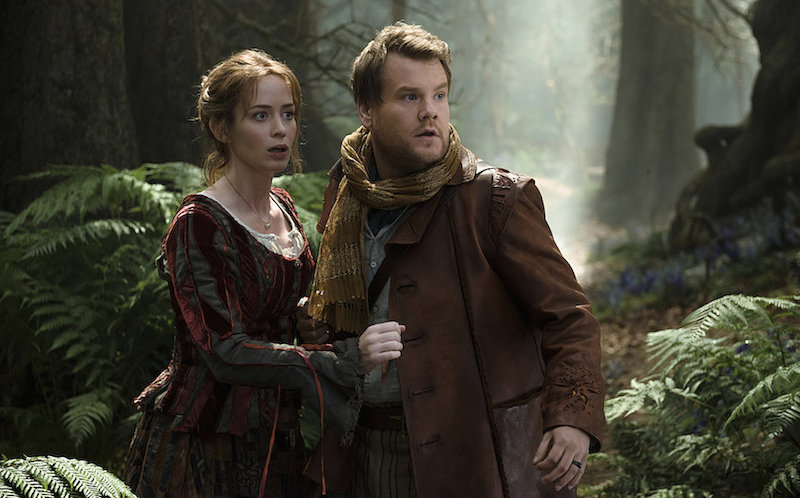
The problem is that the movie spends such a wonderfully long time on the first act material, only to skimp on the second act. Whether it was for the sake of time (the film is only two hours, but the show typically runs over two-and-a-half) or because the studio execs were nervous about some of the darker aspects of the narrative, the result offers a version of the show that feels more like supplemental reading. A cliff notes version, if you will.
It is probable that most audience members unfamiliar with the musical won’t notice these gaps, but that’s an honest shame… because they’re missing out on one of the best commentaries on fables and fairy tales that western culture has to offer. That being said, it’s a fun ride for people who know the show because they can fill in what’s missing. The film is beautifully done—the costumes, the sets, the special effects. If you have a sensitivity to auto-tuning, parts of the music will have you grinding your teeth, and it’s a shame that they felt the need to use it at all because the cast clearly can sing. And allowing Jack and Little Red to be off-key on occasion would perhaps play more realistically because they’re children.
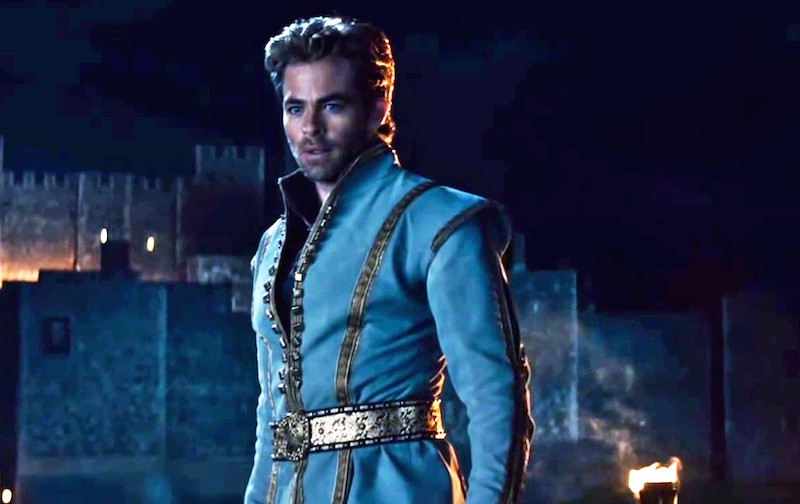
The cast lovely all around, but there are certain members who stand out—Meryl Streep is perfection as always, and Anna Kendrick is an utterly charming Cinderella. Christine Baranski was destined to play the wicked stepmother, and she and both her daughters are nothing but laughs all around. Chris Pine practically steals the movie whenever he’s on screen as Prince Charming, and the films rendition of the duet he sings with his brother, “Agony,” may be the best version ever received. (Can I count this as Star Trek canon? I can, right? He’s Kirk-like enough for me…) Those who were concerned about Johnny Depp’s presence as the Big Bad Wolf need not worry. He plays is part (quite well) and is gone.
One of the film’s most confusing aspects is bound up in how Rob Marshall chose to stage each musical number. When he directed Chicago there was a very clear sense of “where the stage was”: when the songs were in the character’s heads, when we were seeing an abstracted version of events via music, when the songs were just part of everyday life. In Into the Woods this is clear at the opening, but starts getting fuzzy by the end. And there are certain key plot moments that get ghosted over as well, which may have seemed small to the production crew, but generate real disconnects. (Following “Last Midnight,” arguably the show’s most powerful number, I actually heard someone in my theater saying, “What the hell just happened?”) The timeline of the film is compressed awkwardly as well, forcing everything to occur before anyone has a chance for their actions to sink in.
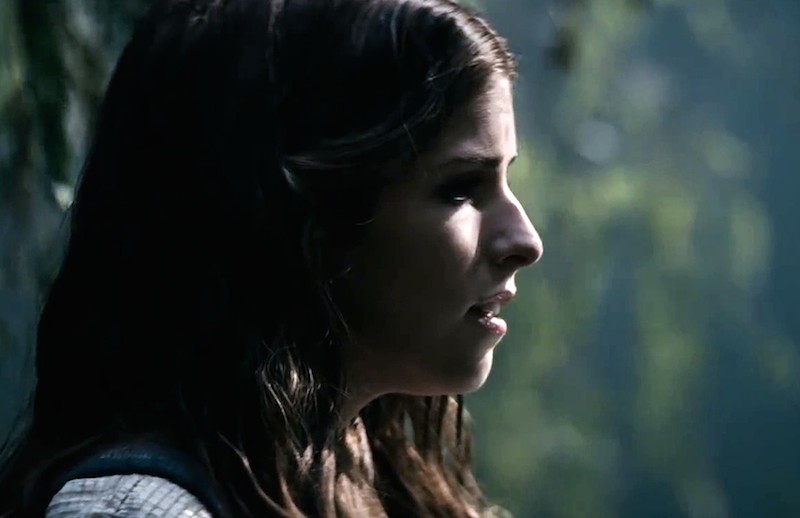
Disney clearly did put their hands in where some important decisions were concerned. And while it didn’t result in a complete turn-around for the show’s message, it did take the bite out of the story’s bottom line. One major character death is outright avoided, one incident of severe moral objectionability is made less objectionable in action if not intention. It would seem that there were certain particulars that the studio simply refused to portray outright. Unfortunately, it leads to precisely what every fan of the show was afraid of—a film that refuses to be as punishing and true as its source.
Basically all of the musical reprises are removed from the story, which is another way in which the latter half of the film starts to thin out. It also leads to a very unfortunate ending sequence where the final “Into the Woods” reprise is only used for the credits. While it might have been understandably difficult to insert without figuring out ways to get most of the cast back into frame, it really does the show a disservice to neglect those final lyrics. There are a few places where very minor lyrics or lines have been altered, typically for the better. Certain bits that might read sexist or dismissive today are ultimately helped with a little tweaking.
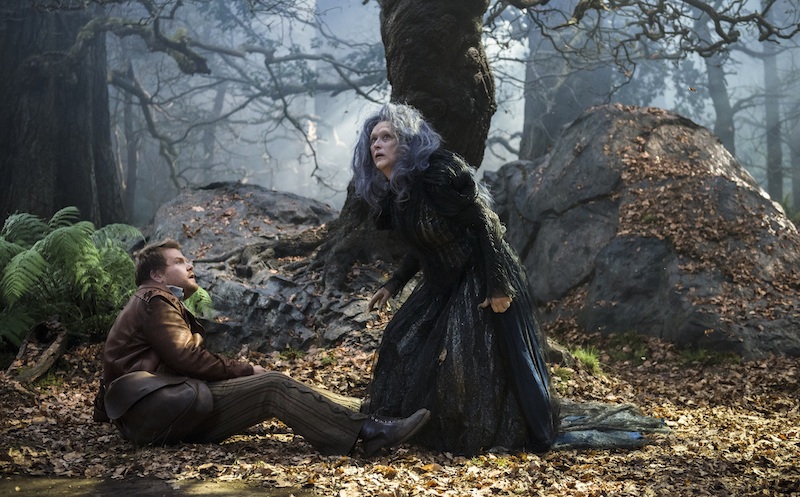
When all is said, if you’re a fan of the story, this version will provide some excellent renditions and takes that you’ll want to revisit. It’s not an ultimate telling of any sort, but it makes for a fun holiday romp.
Emmet Asher-Perrin has played Little Red Riding Hood in this show years ago, and it was honestly one of the best times she’s ever had on a stage. You can bug her on Twitter and Tumblr, and read more of her work here and elsewhere.










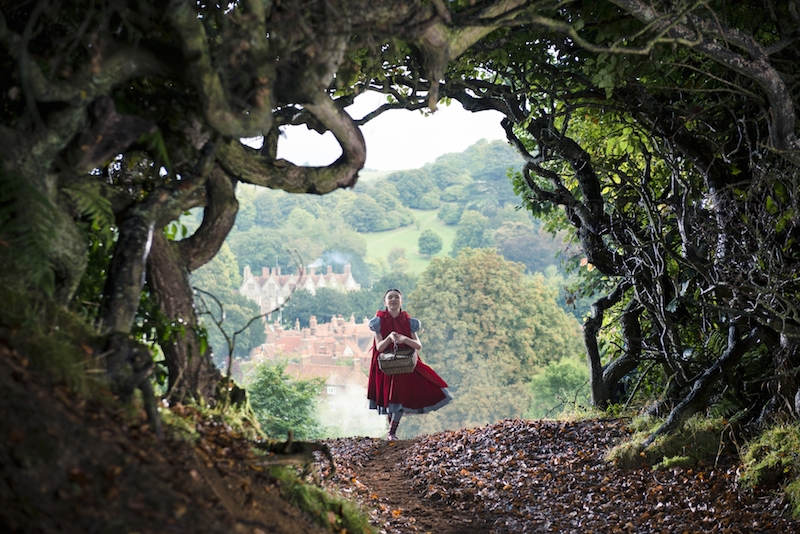
I was quite dissapointed that they didn’t go into the whole Rapunzel thing at the end, or show the new princesses. I did appreciate that the wolf scene was still just as creepy and disturbing. Overall, a good movie that I would recommend if the play isn’t showing nearby.
My entire theater burst out laughing at the first leg-spread, chest-thrust dual “Agony!” It was a beautiful moment.
I’m so glad that I am not the only person who thought that Pine was channelling William Shatner all through “Agony.”
I really liked what they did with “On the Steps of the Palace,” as well.
The guy in the second picture – hasn’t he been on Dr. Who? The episode where he is living on the first floor and the second floor is really a spaceship? And the doctor came back later for a second episode when he was married and had a kid? Cool.
@@.-@ – Yes, that’s him; his name is James Corden. Soon to be the new host of the Late Late Show on CBS, which I’m iffy on, but that’s more to do with my abiding love of Craig Ferguson than any belief that Corden will be bad at the job.
Overall, I quite liked it myself (saw it last night). There were two main things that you mentioned, however, one that I totally agree with and the other less so.
The first is that of the stage’s placement and how musicals are presenting a certain abstract of real life. For me, Into the Woods did a good job of this (especially the first scene with Cindy and her step-sisters as the camera moves around them), but I agree that it let off a bit as the film went on. Despite this, I wasn’t bothered by that because I was so entrapped by the “fairy tale” aspect of it.
The second thing is that of Disney’s pulling punches. Perhaps this is because I have played the Narrator before in the musical at a community theatre (however poorly), but oh how I wish they had killed him. That’s such a good series of scenes that the movie totally skips… seems like a disservice to viewers, if you ask me.
Tl;dr, I enjoyed the movie quite a bit, but I share your criticisms.
Good review! :)
@6 Honestly, I think that the lack of the Narrator was an unavoidable sacrifice due to the medium (kind of like the lack of an act break). I agree that the death of the Narrator is a hugely important part of the original work, but I struggle to see how it would be possible to pull it off in a film that was already in real danger of the dreaded “stagey”. It might have been a bit like asking a movie audience to clap for Tinkerbell–great stage moment that would probably be really weird in a cinema.
I was actually relatively pleased with it–my biggest beef was the inexplicable cut of “No More”, which seemed absolutely necessary with the more explicitly psychological direction they were using with the Baker.
I enjoyed the movie. I only saw a film of the show a few years back, and admittedly only watched the first act and about 15 minutes of the second act before I got too tired to finish, and never went back to it.
But even missing most of the second act of the show, I still feel that the movie’s “second act” was a bit short and didn’t feel as impactful. To me the movie didn’t really hammer in the “be careful what you wish for” theme. Even my husband, who knew the deal going in, was confused as to why Repunzel was even in the movie. He didn’t see how she was the witch’s “wish gone wrong”, because it wasn’t really handled well.
But overall it was fun to watch, and “Agony” pretty much won the whole thing. That was pure brilliance.
Just saw the movie yesterday. Loved “Agony.” I’m also a fan of OUaT, another Disney (via ABC) production of a fairytale mash-up. Amazing what a hold these stories have on us. Missed my sexy pirate, tho’.
I also enjoyed it, in spite of being a huge fan of the stage show, but I’ll agree about really missing “No More.” They even seemed to be leading into that as he walked away from his father, the music built, he started crying, and I’m thinking, “Yeah, this is going to fit perfectly.” And then next thing you know, he’s rejoining them and we didn’t see the decision process at all. I felt like a scene had been trimmed using the delicate precision of a chainsaw.
My theater got lots of laughter during “Agony” with all those romance novel cover poses.
I thought the film was wonderful. I am ridiculously familiar with the stage production, having seen it several times and having played Little Red twice. Overall, I was very pleased, but did miss the slightly darker tone of the stage version. What appeased me about the tweaks was that Sondheim and Lapine themselves did them. The one thing I really did miss was “No More”… It was interesting hearing the reactions of people around me in the theater who clearly had no prior exposure to the musical. “Agony” was amazing – FINALLY, a Captain Kirk who can sing! He can be my “prince for whatever” anytime…
I’m one who went into the movie pretty much completely ignorant of the original source material. I absolutely adored the first act, but was completely confused by the second. Once I got home I did some investigation and it started making more sense. Most likely I will go see the movie again now that I know what is supposed to be going on.
This is old, but we finally rented it.
My husband and I enjoyed it, but not as much as the play. He was really upset they cut out ‘No More’, as that is his favorite song in the play. I never knew this about him! For a long time (I discovered the musical in high school), No More was my least favorite song; I thought it was boring and a big halt in the plot. Now that I’m older I can definitely appreciate it more, but it’s omission didn’t offend me as much as it did my husband.
I really missed the Agony reprise (Dwarfs!) but part of me is kind of happy that Rapunzel at least seems to have gotten a happy ending. I was also paying a lot more attention to Rapunzel’s prince than Chris Pine in the first Agony, haha. That scene in the waterfalls with the ridiculously convenient water splashing and poses had us both laughing quite a bit. And YES, Chris Pine was totally channeling some Kirk there. That scene where they paused right as they led into ‘On the Steps of the Palace’ was so funny. That said, omitting Rapunzel’s death kind of undercuts some of the Witch’s motivation to kill the Giant, I think. I actually had a thought during the movie that I hadn’t had before, which is that the Witch and the Baker’s Wife are similar in some respects – they wanted a child at any cost (although since they cut out ‘The End Justifies the Beans’ you lose some of the moral relativism of the Baker’s Wife’s character)
How cool was it that the Giant was Madame Maxime, by the way ;) Her mother, perhaps?